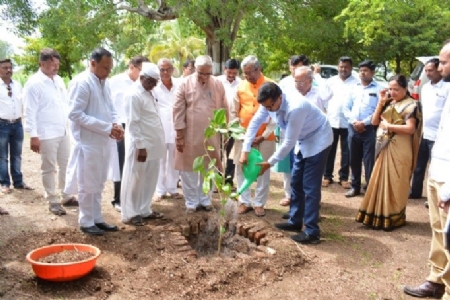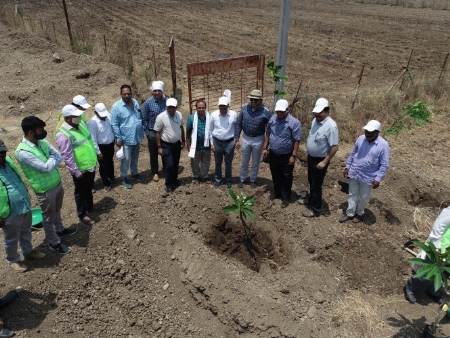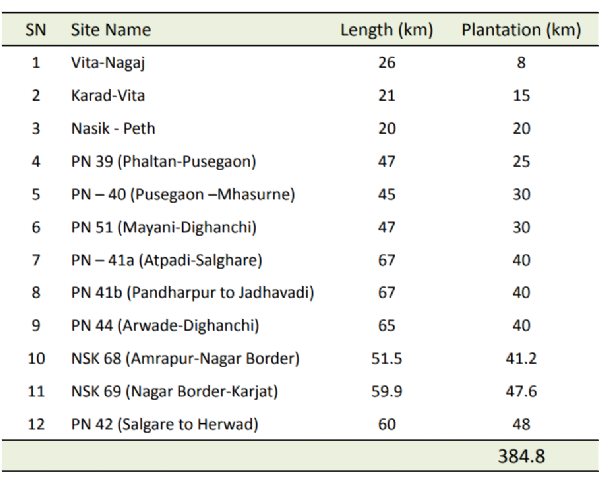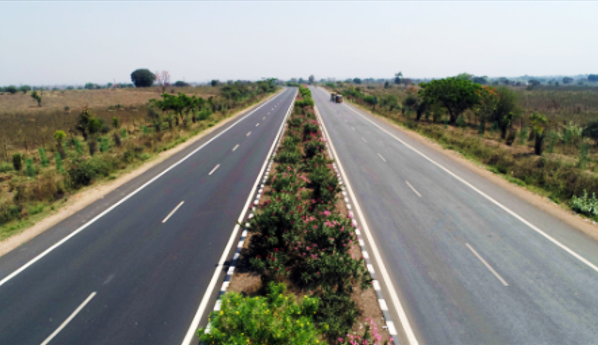Aimed at the Green Mission, Achieving the Greener VisionSustaining the Greenest Objectives
Total Views |
No reminders are needed for the need of the hour to save the existing forests and add more trees to increase the forest cover. This is especially contextual with the aggressive growth of activities in construction and infrastructure development relevant to India, since the past decade. Deforestation on a large scale is normal during road construction, especially where there are none before, which not only results in environmental losses, but also changes the conditions of the environment.
Road construction is a hazardous operation for the trees and inflicts scars on the landscape causing substantial damage to the forest and natural ecosystem. The construction of the network of Highways and then their subsidiary and access roads practically wipe off the plantation in the adjacent areas, leaving the region dry, arid and without any green cover. Then begins the vicious cycle where the water table sinks rendering the land uncultivable, taking the scenario from worse to hopeless.
There is a ray of hope though, amidst this disturbing scenario. The National Highway Authority of India (NHAI) has taken due and preventive cognizance of this looming disaster before things get out of hand. This timely wakeup call manifested vide a corrigendum released in November 2015 regarding the ‘Greening of National Highways’. This ensured that the mandate to protect and conserve and maintain all the trees and plantation of new ones would be implemented without compromise, compensating for any loss of green cover during such constructions.

Rajpath Infracon Pvt. Ltd. looks at this not just as a contractual directive to follow, but more of an opportunity to bring about a paradigm shift in the environment. Through its contributions with committed effort and dedication to sustain the plantations, Rajpath Infracon has ensured that every road construction project is initiated with a plantation drive, and consistent efforts are undertaken to protect and nurture the plants till they hold their roots. We can proudly profess that every project that we have handled till date has always had a plantation drive as one of the project feature. For instance, our upcoming project on N.H. 6 between Amravati and Akola would be plantining 17450 plants in all along the 56 kilometers streatch of road in both the directions and in the median.
This initiative is taken up as a group activity so that the awareness and the responsibility are shared by all connected to the project directly or indirectly. We associate with the local horticulturists who understand the soil composition as well the weather while identifying the plants that shall be planted. The associations are sealed with a contract that ensures that the same party looks after the plants and the increases the chances for survival and good health of the plants. It also makes sure that the trees are not tampered with, damaged or uprooted by anti-social elements or due to other factors, and the plantation remains under constant monitoring and attention. Watering facilities for the young plants are managed with arranging water tankers on a regular basis. Our concerned team gets involved at the grass root level to understand the science of the plantation, how to keep the plants free of disease, well nourished as this are the foundation to sustain the plantations.

The type of plants and trees chosen for the plantations are identified in a manner that they comply with the contract regulations and also be able to survive the environment. The plantations are done in three rows. The first row uses trees that reach medium height, like the Chapha (plumeria alba), Karanj (Millettia pinnata), Kadu badam (Terminalia catappa), Neelmohar (Jacaranda mimosifolia), Gulmohar (Delonix regia), Bahava (Cassia fistula). These are used as the flowers are visible on roads and also guide and relax the drivers in long stretches. The plantations in the second row are the ones that grow big, offer shade, and spread their roots to hold the soil, avoding soil erosion and holding the water table.

The Umbar (Ficus racemosa), Wad (Banyan- Ficus benghalensis), Pimpal (Ficus religiosa), Sisu (Dalbergia sisso), Karanj (Millettia pinnata), Awala (Phyllanthus emblica) and Mango (Mangifera indica) trees are used popularly for such plantations. The outer third row is mainly made up of Bamboo plantations, that last for a good 40-120 years! They belong to the grass variety, are fast groing, with high utility and the future for bio-fuels. The shoots provide food for the native tribes from the forests too. The roots are shallow but spread far holding the soil together. Bamboos (Bambusoideae) require very less looking after, and provide a green cover almost round the year, and a great environment for birds and small burrowing animals to survive and thrive. The Government hence strongly promotes Bamboo plantations. Rajpath Infracon follows these guidelines when its team selects the plants and trees for plantations along the roads. Small plants like the (plumeria alba), Bongunvillae, lantana, Swastik (Tabernaemontana divaricata), Golden duranta are chosen for plantations on the medians where ever applicable on all its road projects.

Just like we deilver only the best quality of material and services in our projects like improvements to exisiting roads, or construction of new ones, weather it is a State or a National Highway, our comitment towards growing and mantaining the green cover is an inherent part of all our projects. Rajpath infracon stand committed to its promoise of promoting greenery and plantation for environment protection and sustainability.

